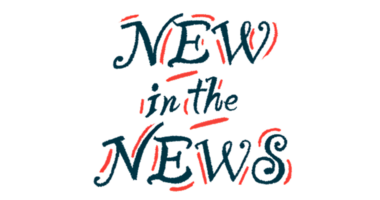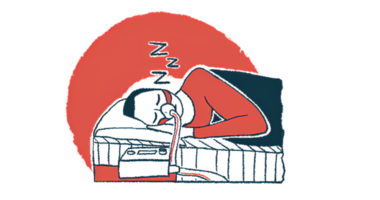How do you like being compared to a snowflake and a sloth?
To me, these 2 symbols say a lot about how we're living with myasthenia gravis

The sloth and a snowflake. Why in the world would a person, community, or organization choose those two symbols to represent myasthenia gravis (MG)? Surely there must have been better critters or weather phenomena to represent the one-of-a-kind rare disease that makes us … move … slowly.
Huh. Then again, perhaps there wasn’t.
The MG snowflake
If you were like me at the onset of diagnosis, you sought out support groups wherever you could find them. Be they social media or national organizations, I researched them all. One commonality among many of them was the use of the snowflake to represent those with MG.
In recent years, with the political climate in the U.S., the snowflake has taken on a different meaning for many. I was glad to see my MG community not allow it to redefine what it meant to be an MG snowflake. An abstract teal snowflake is still the symbol and brand of the Myasthenia Gravis Foundation of America.
So what does it mean? Every snowflake that falls from the sky is unique, in appearance, size, and more. Alone, it goes unheard, unnoticed, and passed by. When amassed in quantities that are hard to ignore, as in a snowstorm, the world stops and pays attention.
The same can be said for those of us in this rare community. Three years ago, when I started talking about my journey with MG, I didn’t have many listeners or followers. A year later, the fine folks here at Myasthenia Gravis News found me through my public social media posts, and I became a columnist at the start of 2022. And as of this writing, I’ve been interviewed and participated in half a dozen awareness articles, interviews, podcasts, and other endeavors for Myasthenia Gravis Awareness Month, currently underway.
Like a snowflake, those of us with the ability to speak out about our lived experiences help raise awareness for those who can’t. By making enough noise, we as a community are bringing attention to our need for more research, and organizations are listening. One of the interviews I did this month was with the Patient Wing organization, which works to match patients with hard-to-fill clinical trials. (Did you know that, according to Patient Wing, about 45 MG trials are recruiting?)
And like a snowflake, we are rare. We’re rare in our symptom presentations, in our diagnostic journeys, in the treatments that work well or don’t work at all, and in the appearance of our best-lived lives.
So yes, I’d say the snowflake is the perfect representation for us. But what about the sloth?
Feeling slothy?
What happens when you’re experiencing symptom flares? For me, I know I move slower. I speak slower. And I sleep a lot.
I believe sloths are the unofficial mascot for myasthenia gravis because it’s better to joke about the debilitating effects of this disease than it is to give in to despair. I know I use humor, often socially unacceptable dark humor (thanks, U.S. Army), but humor nonetheless to cope with my difficult health.
Sloths are cuter than snowflakes, and it’s fun to come up with sayings such as “feeling slothy, need coffee” or “don’t worry, be slothy.” You get the idea.
If you search the internet for the sloth as the mascot for MG, there’s not a whole lot to be found, just lots of cute apparel and accessories. So while I don’t know how or why our community adopted the sloth, I can appreciate and understand the connection.
Do you agree that the snowflake and the sloth are representative of MG? Is there something you think would do a better job of symbolizing our disease? Please let me know in the comments below. When I’m not writing for MG News, I’m a graphic and web designer and just may take your idea and run with it!
Note: Myasthenia Gravis News is strictly a news and information website about the disease. It does not provide medical advice, diagnosis, or treatment. This content is not intended to be a substitute for professional medical advice, diagnosis, or treatment. Always seek the advice of your physician or other qualified health provider with any questions you may have regarding a medical condition. Never disregard professional medical advice or delay in seeking it because of something you have read on this website. The opinions expressed in this column are not those of Myasthenia Gravis News or its parent company, Bionews, and are intended to spark discussion about issues pertaining to myasthenia gravis.








Leave a comment
Fill in the required fields to post. Your email address will not be published.